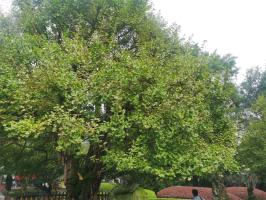Why do planting trees help to slow climate change?
The world is facing a severe crisis of climate change due to the increasing level of greenhouse gases in the atmosphere. Human activities such as burning fossil fuels, industrialization, and deforestation have contributed to this crisis. To combat this problem, it is essential to take urgent measures to reduce the amount of carbon dioxide in the atmosphere. One of the ways to do this is by planting trees.
How does planting trees help to slow climate change?
Plants absorb carbon dioxide from the atmosphere and release oxygen during photosynthesis. Trees are one of the most effective plants to absorb carbon dioxide as they are large and can store large amounts of carbon in their biomass. Trees can store carbon for decades or even centuries, depending on the tree species and the condition of the forest. Therefore, planting trees is an effective way to reduce the amount of carbon dioxide in the atmosphere.
What are the benefits of planting trees?
Planting trees does not only help to reduce the amount of carbon dioxide in the atmosphere but also has many other benefits:
Forests provide habitat for various species of animals and plants, protecting biodiversity
Trees help to reduce soil erosion and improve water quality by filtering out pollutants
Forests provide timber and non-timber forest products that are essential for people's livelihoods
Trees can help to reduce the impact of extreme weather events such as floods and landslides by stabilizing slopes and absorbing excess water
Forests are important for recreation and tourism
What are the challenges of planting trees?
Planting trees is not always easy, and there are several challenges to overcome:
Land availability: finding suitable land for planting trees can be difficult, especially in areas where there is high land demand for other uses such as agriculture or urbanization
Cost: planting and maintaining trees can be expensive, especially in areas with poor soil quality or with a high risk of wildfires or pests
Maintenance: once trees are planted, they need to be cared for properly to ensure their survival and growth
Community involvement: engaging local communities in tree-planting activities is crucial for achieving long-term success
Conclusion
Planting trees is one of the most effective ways to reduce the amount of carbon dioxide in the atmosphere and combat climate change. Besides reducing carbon emissions, planting trees has many other benefits such as protecting biodiversity, improving soil quality, and providing livelihoods. However, there are challenges that need to be overcome, such as finding suitable land, cost, maintenance, and community involvement. Therefore, a concerted effort from governments, NGOs, communities, and individuals is needed to achieve the goal of planting more trees and addressing the crisis of climate change.

 how many times do yo...
how many times do yo... how many planted tre...
how many planted tre... how many pine trees ...
how many pine trees ... how many pecan trees...
how many pecan trees... how many plants comp...
how many plants comp... how many plants can ...
how many plants can ... how many plants and ...
how many plants and ... how many pepper plan...
how many pepper plan...






























